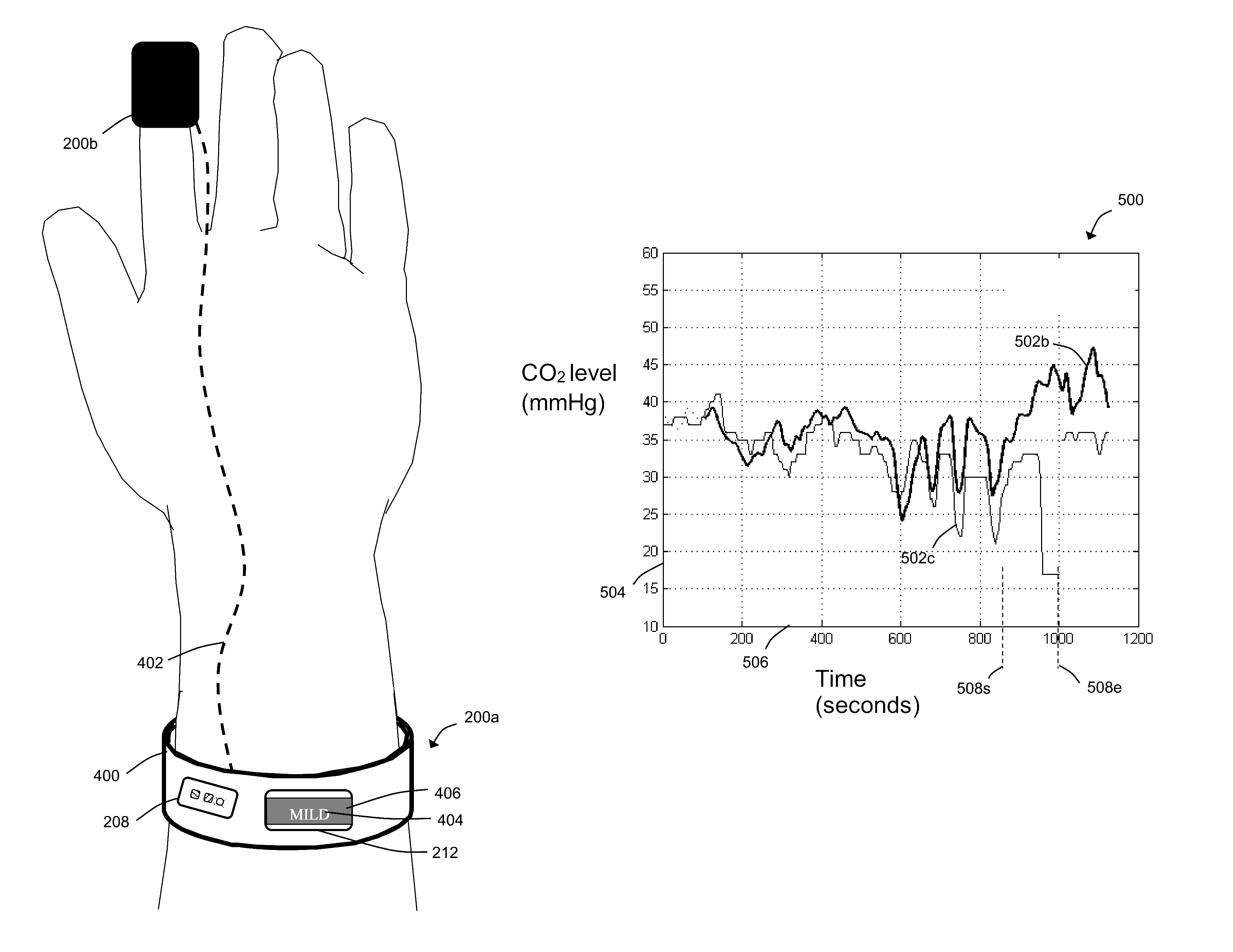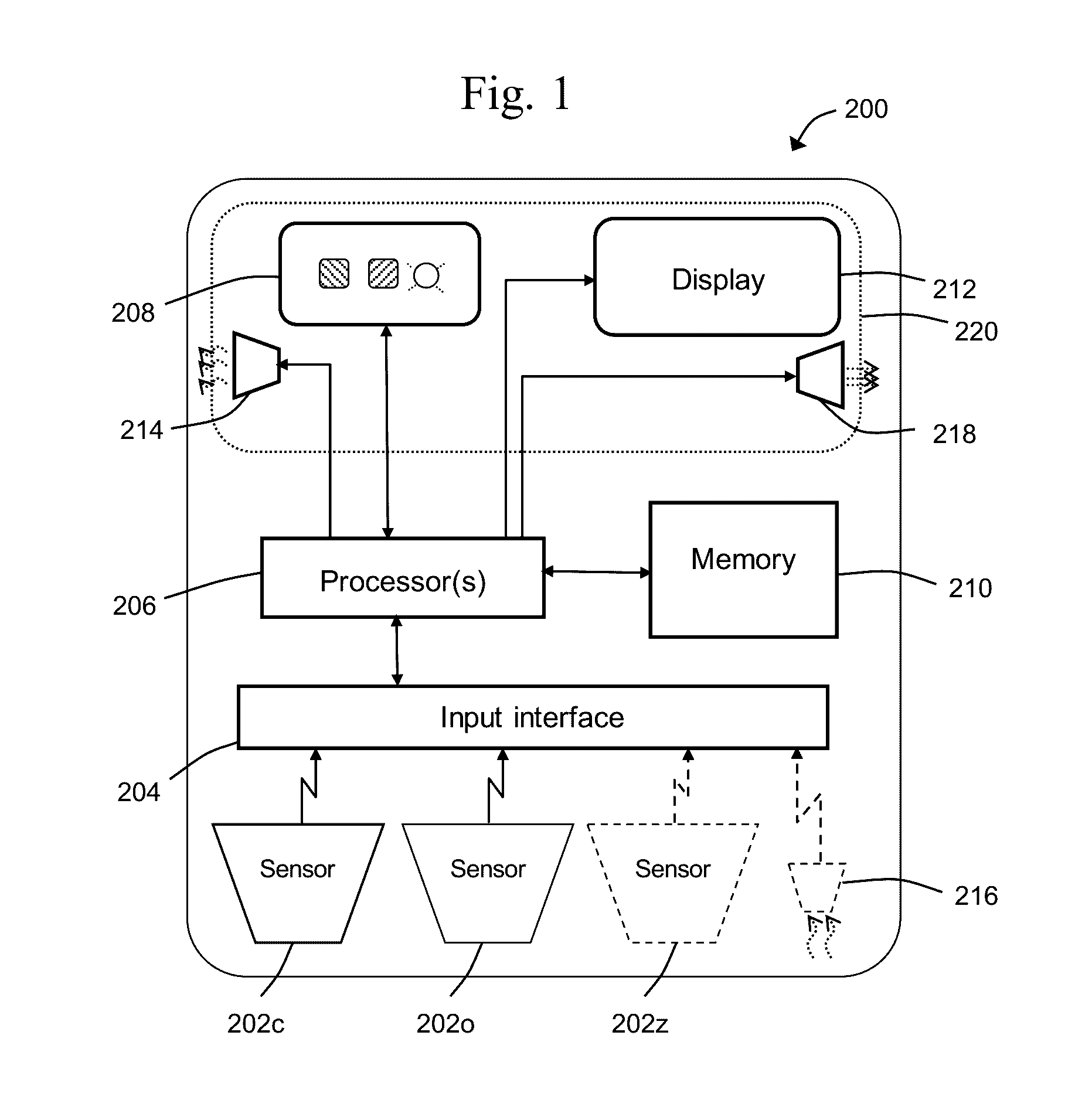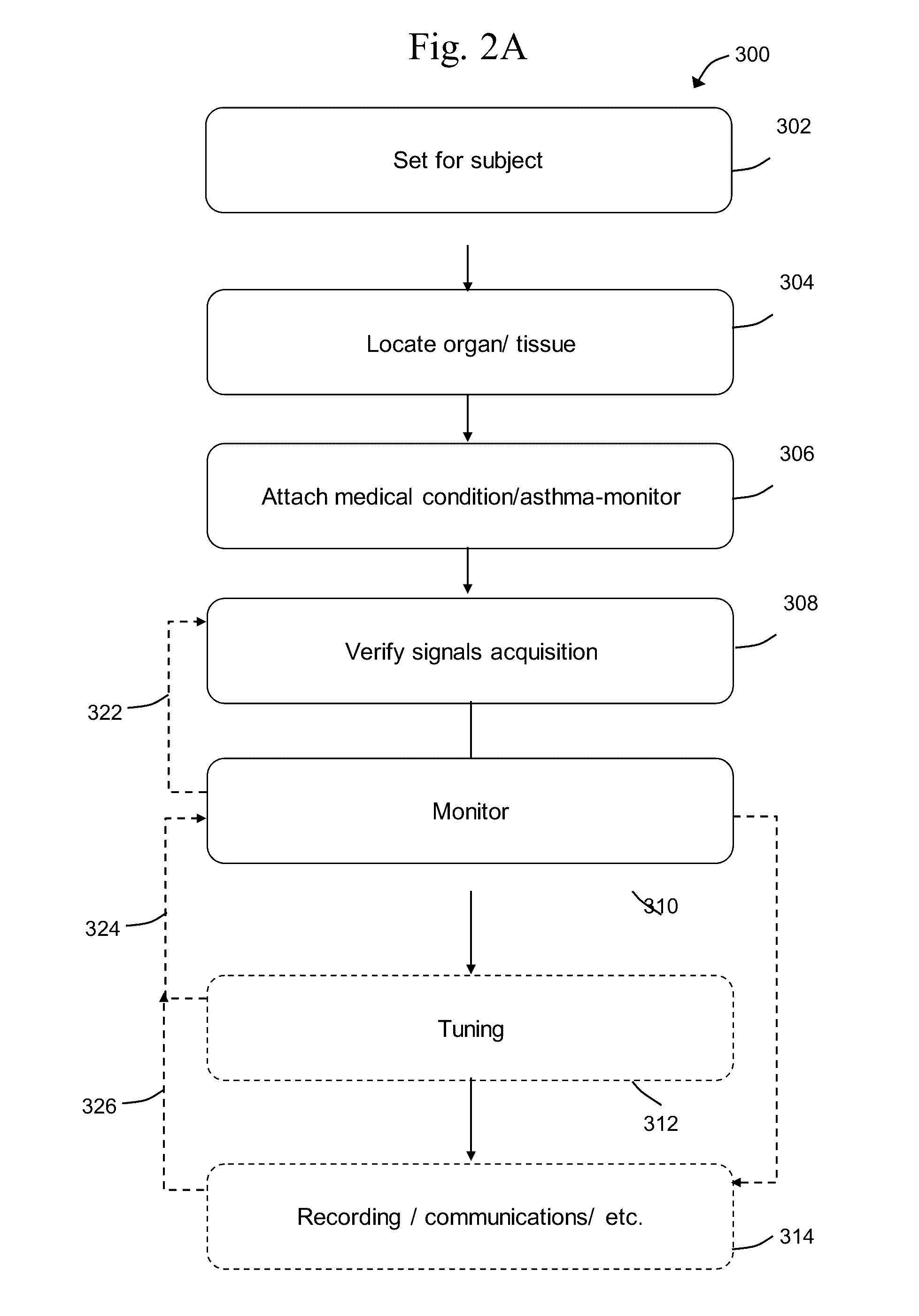Hemodynamics-based monitoring and evaluation of a respiratory condition
a technology of respiratory condition and hemodynamics, applied in the field of hemodynamics-based monitoring and evaluation of respiratory condition of patients, can solve the problems of life-threatening, difficult to predict respiratory failure, and human life being threatened, and achieve the effect of accurate assessment of respiratory status of subjects
- Summary
- Abstract
- Description
- Claims
- Application Information
AI Technical Summary
Benefits of technology
Problems solved by technology
Method used
Image
Examples
example
[0221]FIG. 4 illustrates a chart 500 of responses to CO2 of capnograph 502c vs. a method of respiratory-monitor for evaluation of blood CO2 502b according to exemplary embodiments of the invention. Vertical axis 504 represents CO2 level (mmHg) and horizontal axis 506 represents breathing time (seconds). In a period of apnea between time indicated as 508s and 408e, the blood CO2 504b increases (insufficient breathing) while the capnograph readings 502c drop as the breathing and exhaling air flow is not sufficient, if at all, for the capnograph detection. The apnea simulates one of several respiratory conditions during which capnography measurements inherently deviate from the levels of arterial blood gases. On the other hand, the CO2 measurement by the methods and apparatus described above (CO2-Meter based on the principles disclosed in WO2009 / 144723) adequately agree with arterial blood CO2.
Application of Embodiments of the Invention to the Monitoring of Different Medical Conditions...
PUM
 Login to View More
Login to View More Abstract
Description
Claims
Application Information
 Login to View More
Login to View More - R&D
- Intellectual Property
- Life Sciences
- Materials
- Tech Scout
- Unparalleled Data Quality
- Higher Quality Content
- 60% Fewer Hallucinations
Browse by: Latest US Patents, China's latest patents, Technical Efficacy Thesaurus, Application Domain, Technology Topic, Popular Technical Reports.
© 2025 PatSnap. All rights reserved.Legal|Privacy policy|Modern Slavery Act Transparency Statement|Sitemap|About US| Contact US: help@patsnap.com



